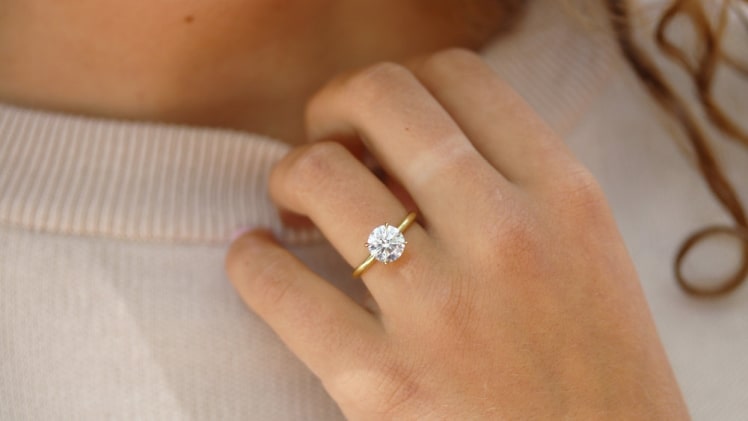Lab created diamonds are made in a laboratory. They have all the characteristics of real diamonds, yet are created artificially. They are becoming the standard in the jewellery industry. While real diamonds are found deep within the earth, lab created diamonds are a product of brilliant human minds. While the former is a favorite among diamond lovers, the latter is taking over the jewellery market.
Chemical Vapor Deposition
CVD diamonds are created in a lab under a controlled environment, but the resulting stones are still subject to a large amount of variation in quality. This process involves the use of hydrocarbon gas and chemicals to grow a diamond. The hydrocarbon gas contains atomic hydrogen, which assists the formation of diamond. The atomized hydrogen reacts with the hydrocarbon gas to form pure carbon, which is a diamond. CVD diamonds are polished just like mined diamonds, and laser inscriptions can be added.
CVD diamonds are created by starting with a thin seed diamond. The seed diamond is placed in a chamber with a high vacuum. The chamber is evacuated to about 20 millitorrs. After that, a carbon-rich gas mixture lab diamonds Melbourne is injected into the chamber. The carbon in the gas becomes ionized, breaking molecular bonds and adhering to the seed diamond. This bonding between the carbon and diamond seed causes the diamond to grow into a larger stone.
The benefits of CVD over HPHT diamonds are numerous. One of the biggest benefits of CVD is the reduced cost of production. CVD diamonds are more affordable than diamonds created using the HPHT method, but the HPHT process is more complicated, requiring heavy equipment.
High-Pressure High-Temperature
HPHT diamonds are created by heating a diamond seed to high temperatures and high pressures. This creates a rough diamond that is very similar to a natural diamond. This diamond is then subjected to diamond polishing and cutting processes. Diamonds created using this method are usually shaped into round shapes and are known as “HPHT diamonds.” HPHT diamonds are produced by several different processes. For example, the cubic press, the belt press, and the split-sphere (BARS) press are common ways to create these diamonds. Unlike diamonds created by the CVD method, HPHT diamonds require a high temperature and high pressure to form.
The first reproducible HPHT lab-grown diamond was created in 1954 by General Electric. Although it was a tiny, heavily included diamond, it did not meet the requirements of gem-quality diamonds. Most of the synthetic diamonds created since then have not reached gem quality and are used in industrial tools and equipment.
High-Pressure High-Pressure
HPHT diamonds are man-made, and the process is very similar to natural diamonds. In both cases, the diamond is subjected to high pressure and high temperature to create the perfect gemstone. Unlike natural diamonds, HPHT diamonds have no minute inclusions or impurities and can be used in many types of settings. In addition, they are much more affordable.
HPHT treatment is also used to add color to premature diamonds. These gems are mined in volcanic regions, but they lab created diamonds Manchester are not yet fully formed. HPHT processes use pressure and heat at 3,700 degF to complete nature’s work. The process causes the nitrogen in the gems to be released, turning them from colorless to yellow.
This process is relatively simple and closely controlled, and mimics the conditions deep within the earth’s crust to form diamonds. The process begins with a small natural diamond seed, which is then placed in a carbon source, either diamond powder or graphite. The extreme heat creates a molten solid, which solidifies around the diamond seed. The process can take less than a month.
Low-Pressure High-Temperature
HPHT diamonds are synthetic diamonds grown under conditions that resemble those of a natural diamond. These conditions, which range from five thousand to eighty million atmospheres, lead to the formation of cubic-shaped crystals at temperatures of about a thousand to one hundred and forty degrees Celsius.
HPHT synthetic diamonds exhibit a range of fluorescence colors. Many exhibit more than one, ranging from green to orange. Green fluorescence is often attributed to H3 defects, while orange to red fluorescence is attributed to NV centers. Other fluorescence colors, however, remain less understood by scientists and there are no clear correlations.
Lastly
High-temperature HPHT diamonds are used in applications that require durability, flexibility, and optical properties. They are excellent for laser windows, semiconductors, and wear-resistant materials. The process also helps create diamonds with unique shapes and sizes.

